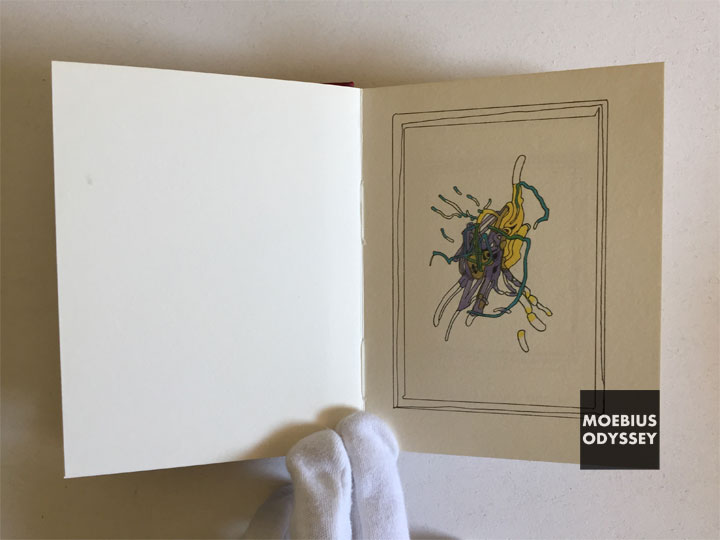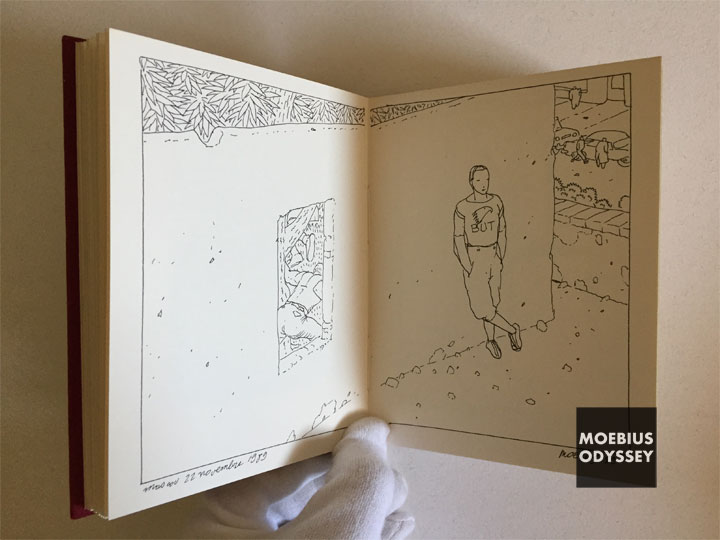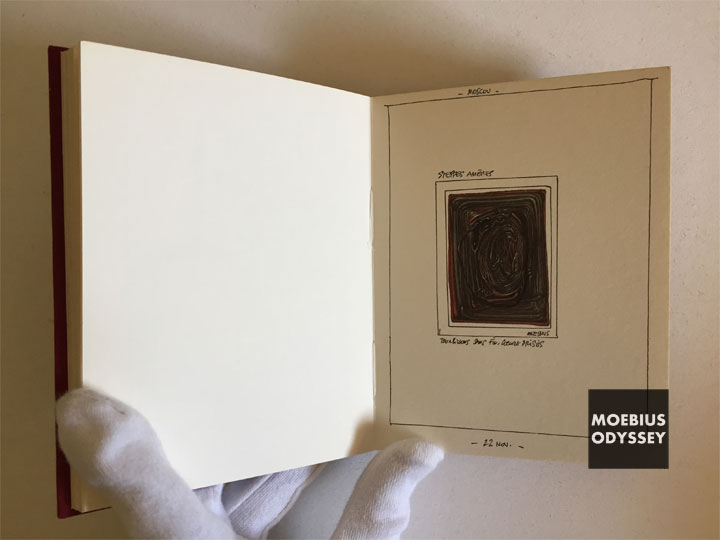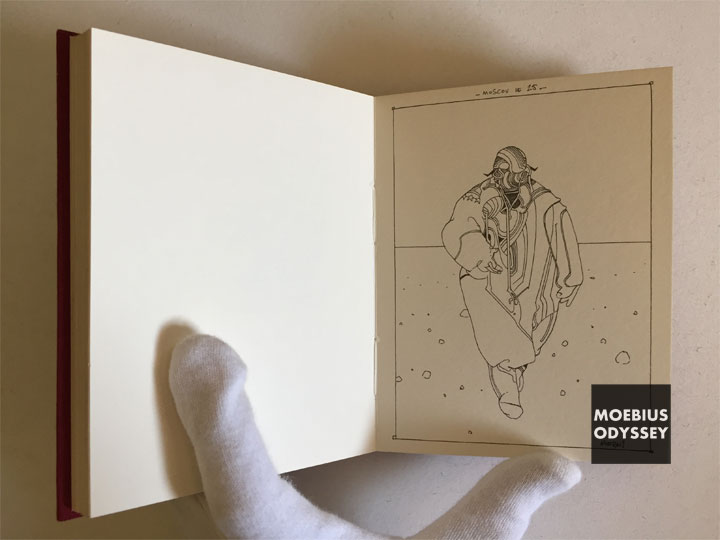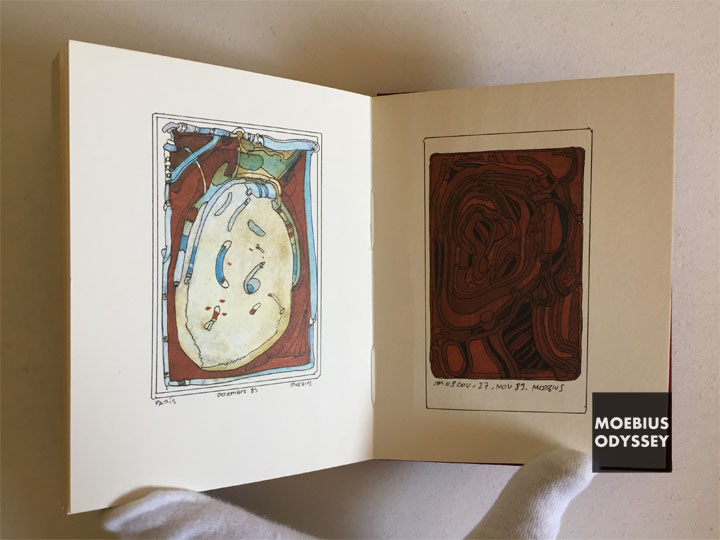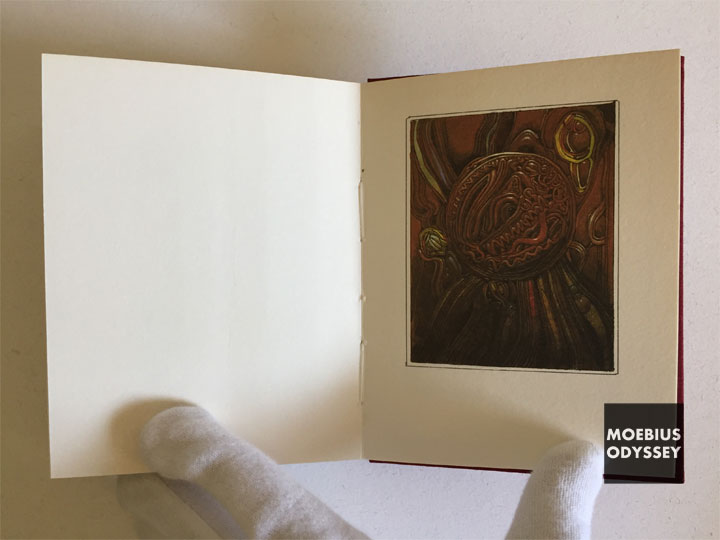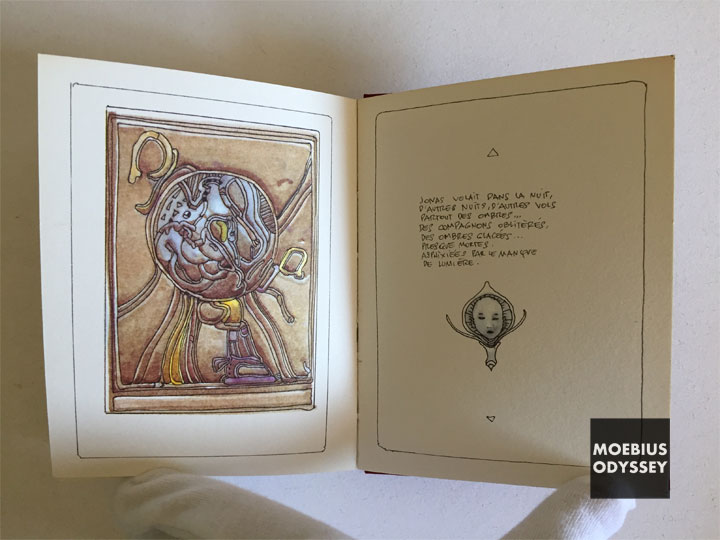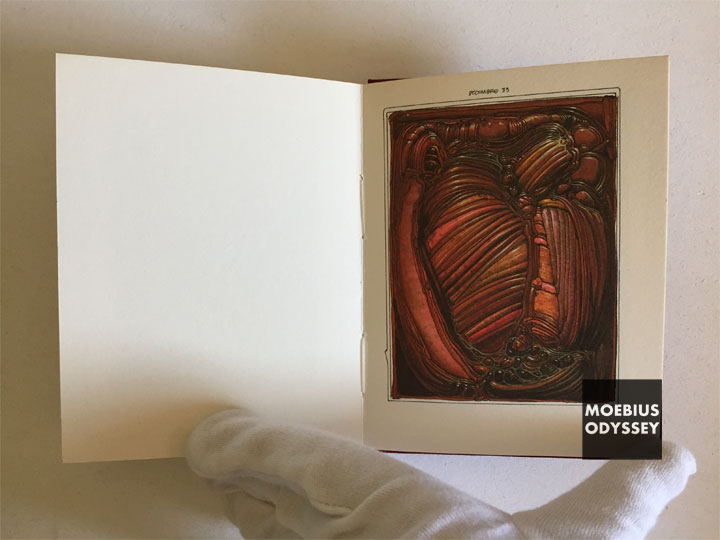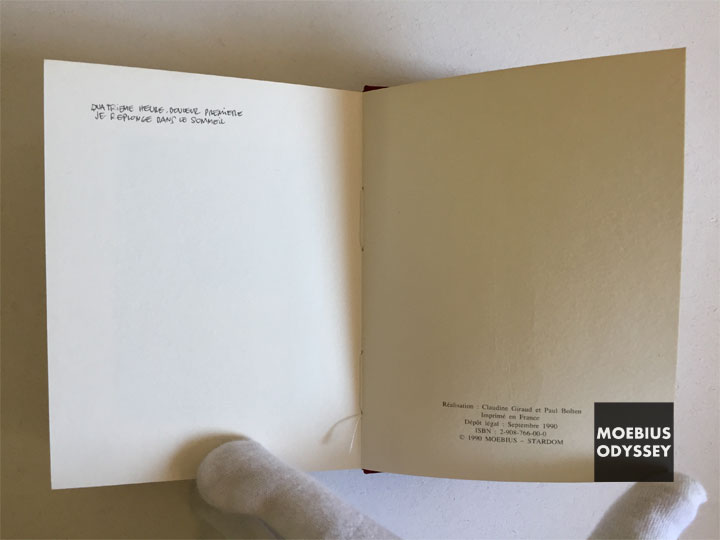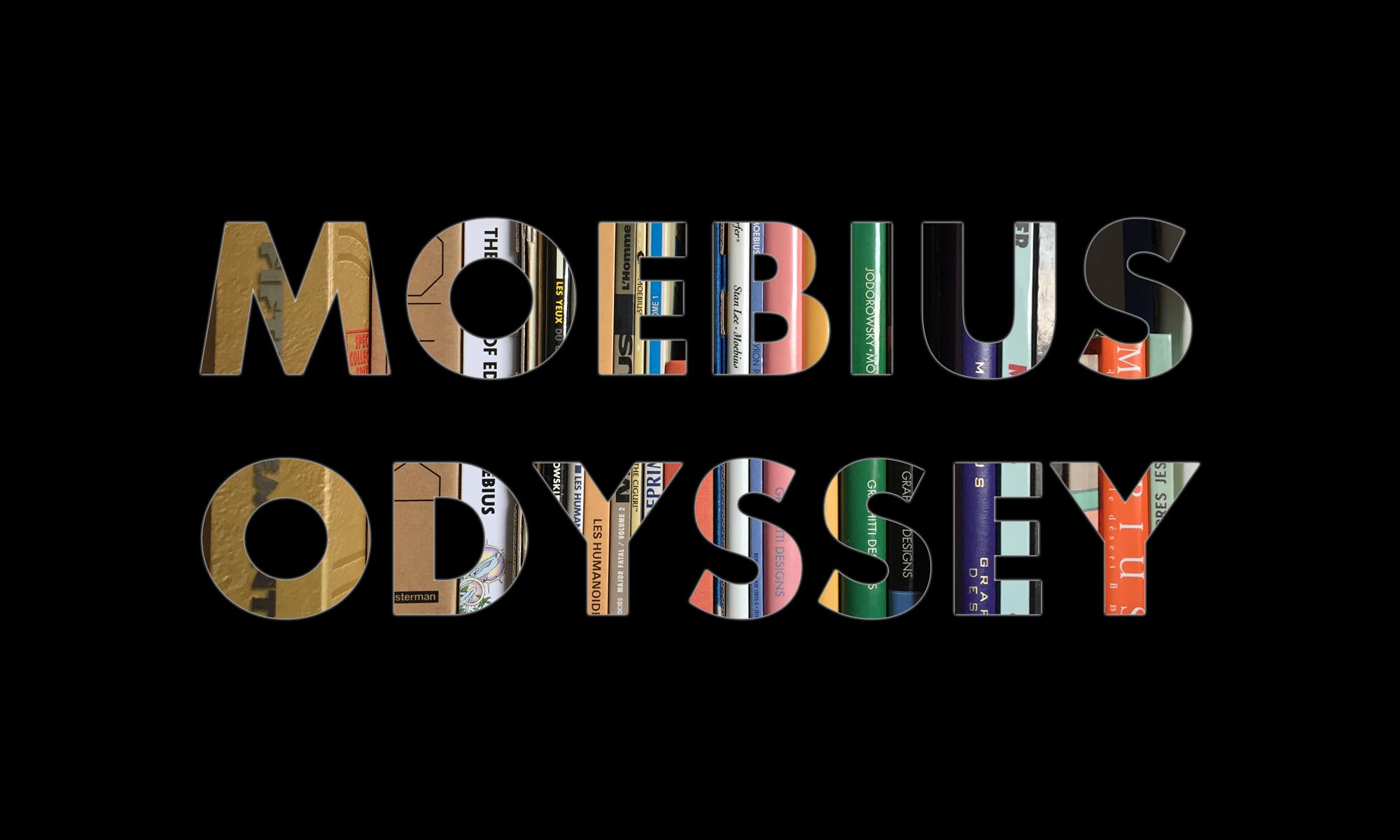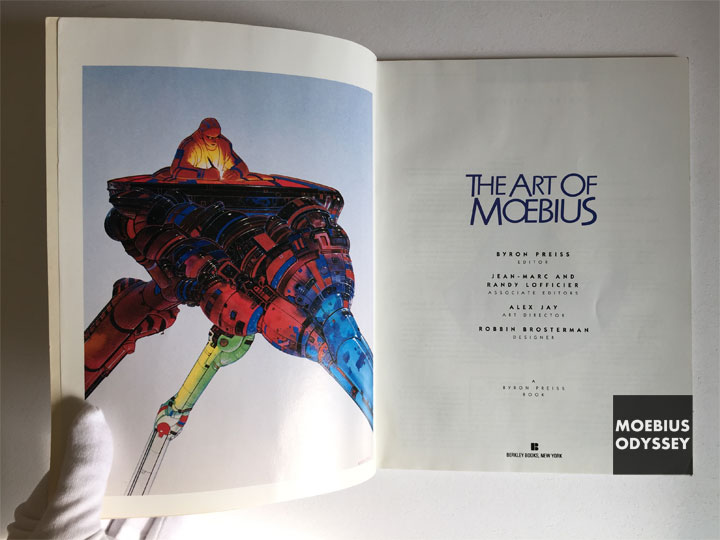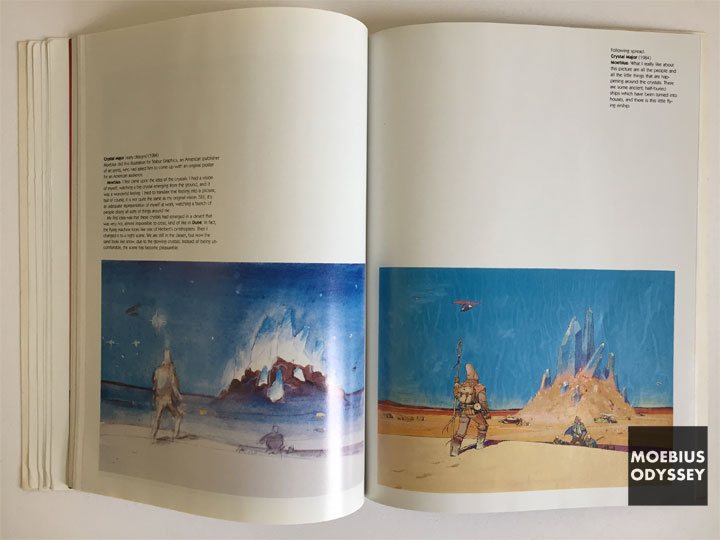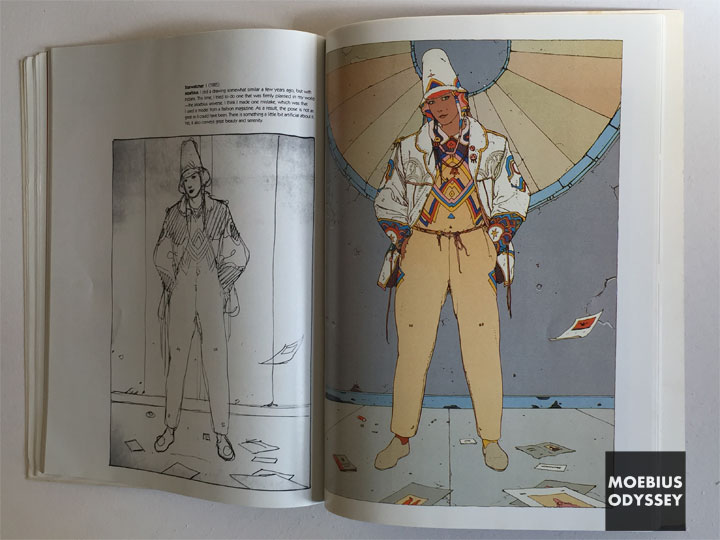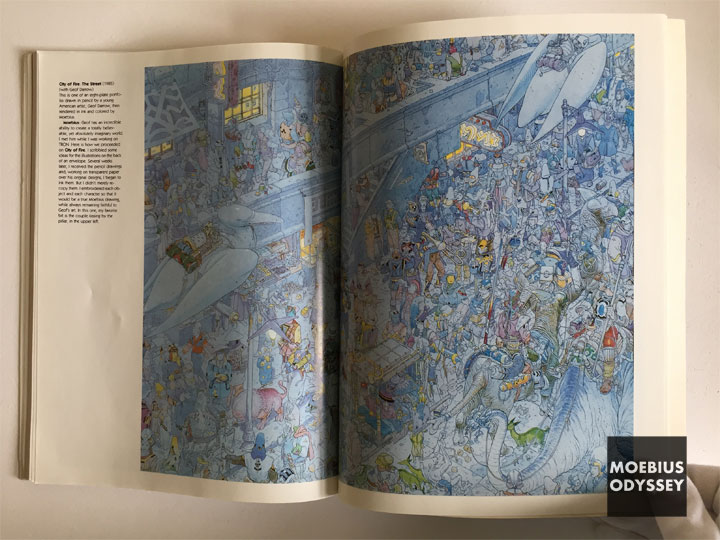Mockba (1990)
Stardom
11.5 x 15cm, 85 black & white and colour pages
Mockba (pronounced Moskvá and how the Russians write the name of their capital city Moscow in Cyrillic), is a small signed and numbered limited edition of 1500 and the first publication under Moebius’ Stardom imprint released in 1990. Mockba’s little red book presentation is a clear nod to Chairman Mao’s “Little Red Book” of the People’s Republic of China. The author and title text on the front cover are in large, gold lettering and set to the likeness of Moebius’ own handwriting whereas underneath the subtitle “Carnet de bords” (which means “record book” or “log-book” in English) is in smaller, uppercase lettering.

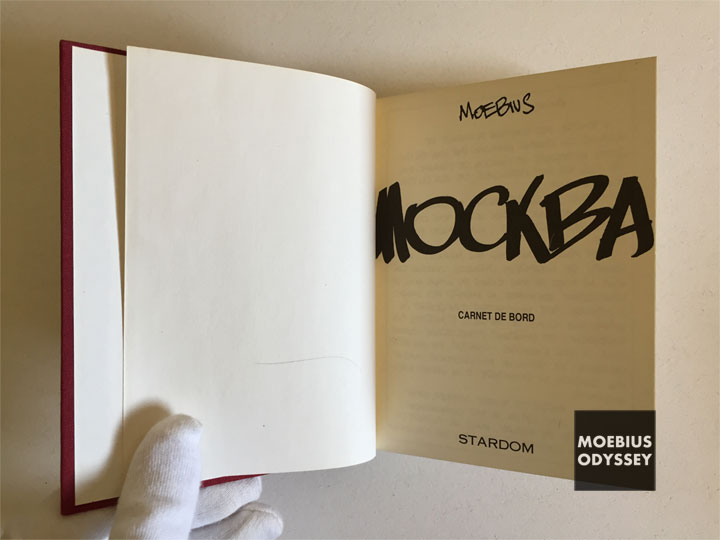
As you open this tome you discover a short 2 page introduction in French by Moebius that in English roughly translates:
“Carnet de bords
There is a tradition of the travel diary, which seems to be threatened by all the modern processes of film-making, all of them more and more practical, more and more efficient.
However, a simple notebook and some pencils can alone open all the doors of imagination and dreams.
Thus, over the years, I have filled many notebooks, some dragging in the back of my pockets for many months, filling up slowly, random waiting, dirty airport seats or even subway platforms … Others, more rarely, closing in one go, like this one, by example, realised in a short week and almost exclusively in the sinister and disproportionate hall of a big hotel in Moscow.
Sometimes, drawings and texts correspond well to the idea that one is commonly made of a travel note, but most of the time, one will search in vain for any relation with a place or a precise event. We can even estimate that the artist will have done as well, if not better, staying at home in the comfort of his studio.
However, these devotional drawings, even and especially the abstract ones, are transcriptions of states that could only be provoked by the journey and its tribulations, sketches on the spot, not of what happens in front of the eyes of the traveler, but from what is happening behind, where the magic mirror of the secret reality of the world unfolds to infinity.”
Beneath Moebius’ introduction is a drawing of a figure seated on a bench, writing into a small book (not unlike the one the reader is currently holding in their hands) and beside them a suitcase covered in stamps likely of places that they have visited.

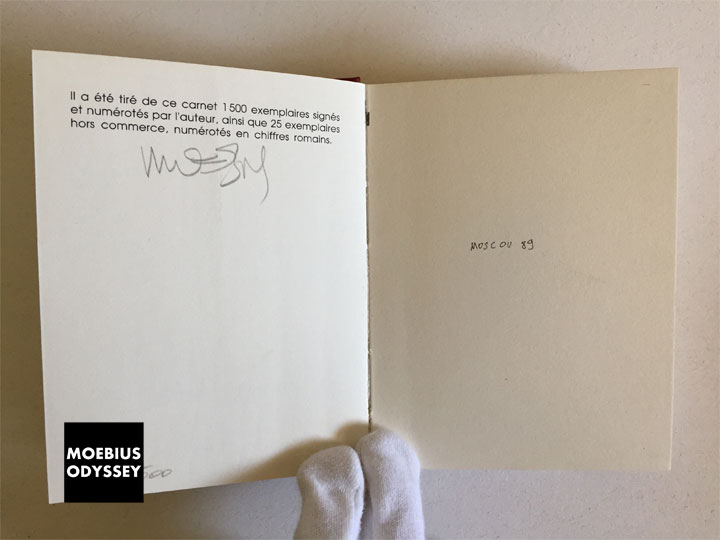
Once you explore more inside Mockba, the more the pages resemble a sort of personal sketchbook and flows like a visual diary kept by Moebius in 1989 which for historical context was the same year that the Berlin Wall fell in Germany that once separated East and West Berlin and that would lead to the Reunification of Germany, followed years later by the collapse of the Soviet Union in Russia.
